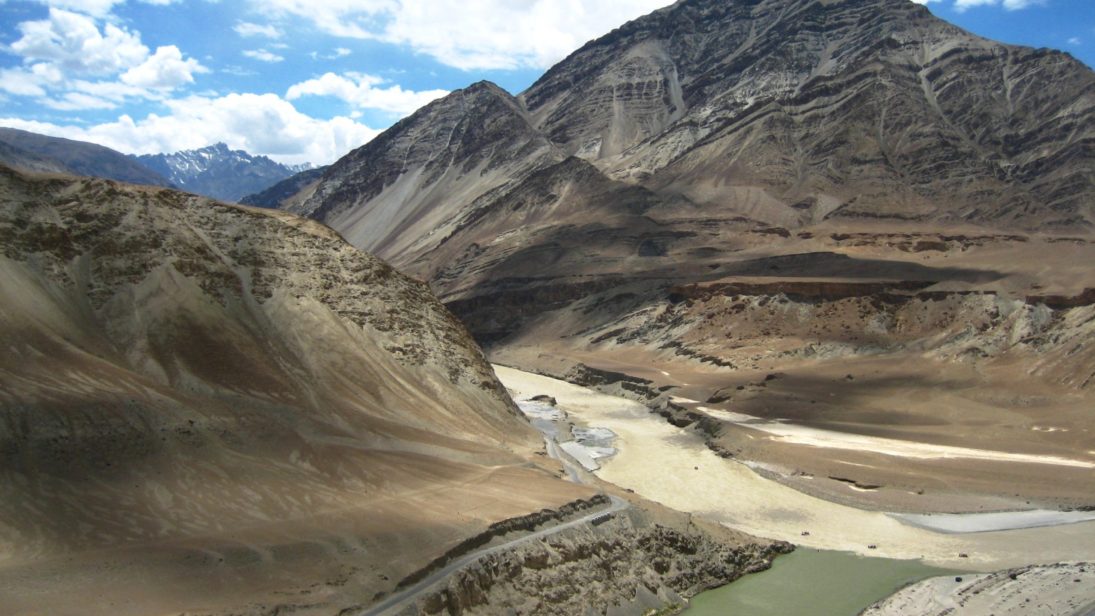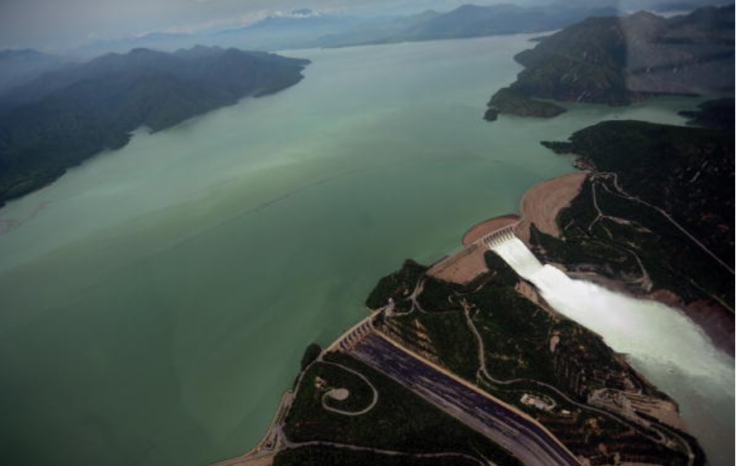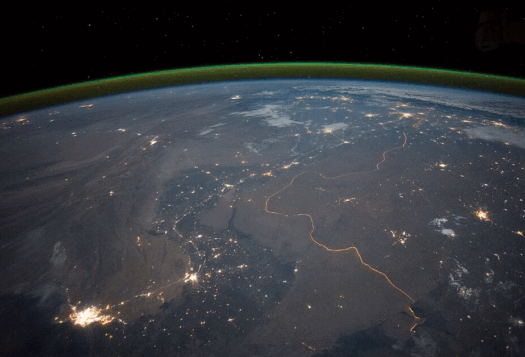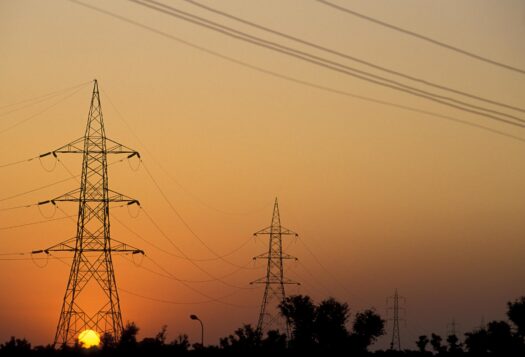
It is anticipated that by 2025, Pakistan will face a water shortage of 31 million acre feet of water, or roughly about a third of the water used for irrigated agriculture in the country each year. This is especially significant, as irrigated agriculture accounts for 95 percent of Pakistan’s water resources and employs 38.5 percent of its workforce. In the next 30 years, climate change is anticipated to increase Pakistan’s demands for water between 5 and 15 percent. On top of this, the explosive growth of its population, continued cultivation of “thirsty crops” (e.g. rice and sugarcane), and inefficient use of available water resources, makes it look increasing likely that Pakistan could become a water scarce nation in the near future.
This rising demand for water in the face of dwindling resources is being mirrored in India and the relative water insecurity felt by these two neighbors could amplify already tense relations. While many have focused on the potential for a terrorist attack or an incursion along the Line of Control to spark conflict between India and Pakistan, relatively little attention is paid to the potential for a crisis to either begin or worsen as a result of the increasing water shortages in the region. Pakistan, the lower-riparian neighbor, has already expressed concern about the potential for India to use its status as the upper-riparian neighbor to cut off the water flowing into Pakistan. As 90 percent of the water that Pakistan utilizes for agriculture comes from waters it shares with India, Pakistan should focus on increasing its water storage and improving the efficiency of its water usage in order to help mitigate the potential for this new source of tension.
Addressing Pakistan’s Water Stress
In April 2018, the government of Pakistan released its National Water Plan (NWP), addressing Pakistan’s worsening water stress and outlining an Integrated Water Resources Management policy consisting of 33 measures which the federal government needs to take to alleviate this coming crisis. These measures included increasing water storage via reservoirs, improving flood management, decreasing pollution as a means of increasing fresh water resources, decreasing water waste by increasing the efficiency and efficacy of how water is used, regulating the withdrawal of groundwater, and strengthening and capacity-building of water resource institutions.
While many have focused on the potential for a terrorist attack or an incursion along the Line of Control to spark conflict between India and Pakistan, relatively little attention is paid to the potential for a crisis to either begin or worsen as a result of the increasing water shortages in the region.
Of all the measures outlined in its NWP, the government of Pakistan has so far focused largely on increasing water storage and improving flood management through the construction of dams. This approach does have its merits. By providing a place for rainfall to collect during the wet season, since it often doesn’t seep into the soil due to the preparation of the land over the years from agriculture, dams allow Pakistan to simultaneously guard against floods and increase the water it has available. Dams also prevent against the down-stream flooding in instances of glacial lake outburst floods (GLOFs), which occur when the natural dams containing glacial lakes bust or melt, and which are anticipated to become increasingly likely as the Himalayan glaciers that feed the Indus River Basin slowly melt due to rising temperatures. Further, dams enable Pakistan to also address it energy crisis through the creation of hydroelectric power. This is particularly important to Pakistan, not only because the nation has continuously faced an energy crisis for decades, but more importantly, traditional power plants, particularly coal and nuclear, require significant amounts of water to function.
While dams will provide much needed energy and increase water storage for the wet season, Pakistan needs to turn its attention towards more efficiently using the water resources that it already has. Although irrigated agriculture uses such a large percent of Pakistan’s water resources, 44.9 percent of the water diverted for irrigation being lost due to seepage in canals. In conjunction with building dams, Pakistan should also focus on improving the efficiency of its water usage through measures such as reducing seepage by lining canals, regulating drilling for groundwater wells, and treating and reusing wastewater. It also should consider solutions such as Managed Aquifer Recharge in order to capture flood waters during the monsoon season and replenish ground water resources, which can then be used during the dry season. Adding these measures, as the NWP laid out, will make Pakistan more resilient to reductions in water resources, either resulting from climate change or from Pakistan’s neighbors.

Impact of Water Stress on India-Pakistan Tensions
Signed in 1960, the Indus Waters Treaty divided the water in the Indus River Basin between India and Pakistan, reducing the tension over the usage of the waters that arose after Partition. India, the upper-riparian state, was given rights to the Eastern Rivers (the Sutlej, the Beas, and the Ravi) until they cross into Pakistan and was prohibited against interfering with the natural flow of these rivers. Pakistan, the lower-riparian state, was given unrestricted access to the Western Rivers (the Indus, the Jhelum, and the Chenab) in addition to the waters of the Eastern Rivers once they cross into Pakistani territory.
Although the Indus Waters Treaty has managed to serve as a viable avenue for India and Pakistan to air and settle grievances regarding water resources for the past 60 years, the deepening distrust between the two neighbors may undermine this treaty which has helped maintain stability in the past. This is a pressing concerning because, like Pakistan, India has been building dams along the Eastern Rivers as a means of addressing both its water and energy needs. Although any single one of these dams could not suitably lower the flow of any of the Eastern Rivers to such an extent that it would significantly hurt Pakistan, the collective web of these dams could. The message that these dams sends has not been lost on Pakistan, who views these dams with hostility, and has accused India of violating the Indus Waters Treaty.
Pakistan’s concern that India will use these new dams to cut off water in a future conflict is not an unfounded fear. India has a history of threatening to leave the Indus Water Treaty in order to cut off the flows of the Eastern Rivers. In 2002, India’s then Water Resources Minister Bijoya Chakroborty explicitly threatened to abrogate the treaty in order to cause a drought in Pakistan that would bring the nation to its knees and force them “to beg for every drop of water.” A similar line of thought occurred in the Indian government following the 2016 Uri attacks, and again following the 2019 attack on Indian security forces in Pulwama. So far, India has been using this threat as a deterrent in an effort to force Pakistan to consider the implications of carrying out an attack against India, and has refrained from taking this potentially provocative step. However, as tensions increase and distrust deepens between India and Pakistan, and as India feels its own strain under its own dwindling water resources, India may choose to reduce the water flowing through its dams and into Pakistan. This action could serve a potential trigger for a conflict between the two neighbors. What is unclear though, is what the proportionate response to such an attack would be and how far up the escalation ladder a conflict started over water would go.
Pakistan’s concern that India will use these new dams to cut off water in a future conflict is not an unfounded fear. India has a history of threatening to leave the Indus Water Treaty in order to cut off the flows of the Eastern Rivers.
Pakistan’s concerns about India’s dam building on the Eastern Rivers has been augmented by India’s decision to fund the Shahtoot Dam project on the Maidan River in Afghanistan, a tributary of the Kabul River that flows into the Indus. This project is one of thirteen planned projects on the Kabul River, not all of which are being funded by India. However once all of these projects are completed it is anticipated that Pakistan will experience a 16-17 percent drop in its water levels. To Pakistan, India’s investment in the dams in the Kabul river basin are anything but benign aid—they are effort by India to create a strangling web of dams that can run Pakistan dry if India deems it necessary.
Climate change is often called a threat multiplier because it can aggravate preexisting tensions leading to conflict in ways and at levels previously unseen. With climate change driving up demands for water across the subcontinent, it is more pressing than ever that Pakistan not only seeks to increase water storage to better utilize water from the wet season during the dry season, but also improves the efficiency of its water usage. Although Pakistan cannot control whether or not India decides to cut off the flow of the Eastern Rivers, by taking measures to increase storage and improve efficiency, Pakistan can control how acutely it feels a reduction in water. Improving its resiliency enables Pakistan to view climate change and India’s dam construction as less of threat to national security.
***
Image 1: Gopal Vijayaraghavan via Flickr
Image 2: Farooq Naeem/AFP via Getty Images


